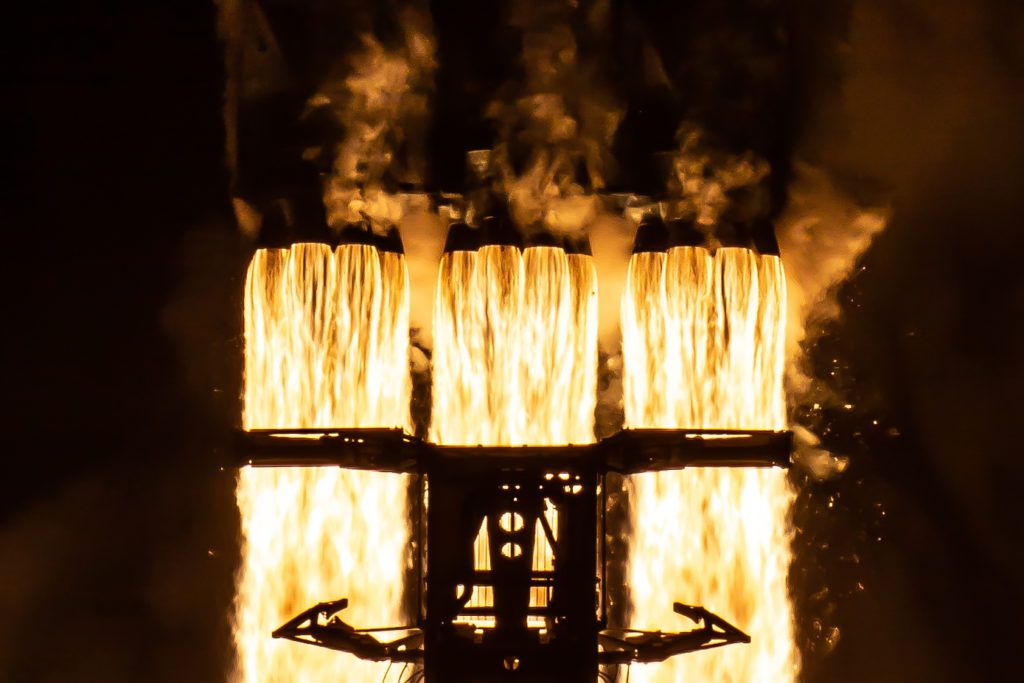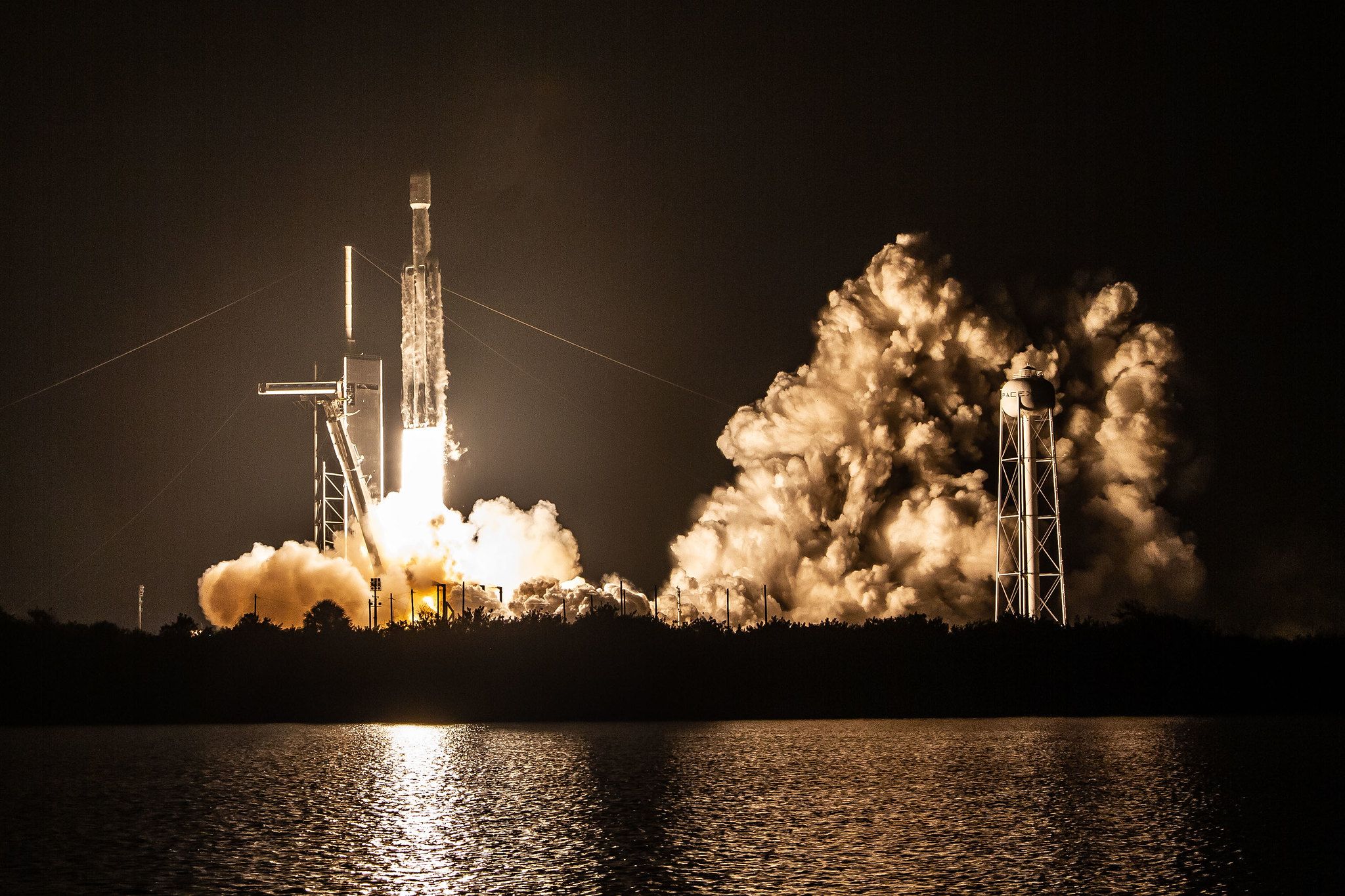SpaceX’s successful launch early Tuesday morning placed 24 satellites in three different orbits and marked the first time the Falcon Heavy side boosters had been reused. They had been part of the Arabsat-6A launch in April.
According to SpaceX, “The Space and Missile Systems Center teamed with multiple commercial, national, and international mission partners for the historic DoD Space Test Program-2 (STP-2) launch. SMC procured the mission to provide spaceflight for advanced research and development satellites from multiple DoD research laboratories, the National Oceanic and Atmospheric Administration (NOAA), the National Aeronautics and Space Administration (NASA), and universities.”

The Falcon Heavy mission pace is ferociously quick. Just over two and a half minutes from launch, the twin side boosters separate from the core and begin their powered descent to landing. About a minute later, the center core and second stage separate, with the core itself readying for its return to the surface. In just under nine minutes, the side boosters have landed, and less than three minutes later the core first stage touches down. By 13 minutes into the mission, the spacecraft has already begun deploying satellites. Altogether, the mission launched all 24 satellites in three and a half hours.
Included in the payload was NASA’s Green Propellant Infusion Mission, which will test “cleaner, safer and more efficient fuel” than hydrazine. There are six NOAA satellites in the group and one supported by The Planetary Society. Its LightSail 2 is a test to determine if spacecraft can be propelled by “solar radiation pressure.”
SpaceX launches a Falcon 9 mission on July 21, acting as the UPS guy for the International Space Station.




































That pic of the 3 exhaust groups… wow. So much stuff going one way to push so much stuff the other way.
Good report, but unclear whether all three boosters were successfully recovered. Getting the core back intact always is the main recovery challenge.
It is pretty amazing that it all happens in less than 15minutes. Yes, the picture of 27 Raptor engines all firing at once is an impressive sight.
Just found that the core booster missed the drone ship and landed in the Atlantic Ocean nearby. Too bad. Not sure if they can salvage any of the booster, but they generally will float, so possible for some recovery.